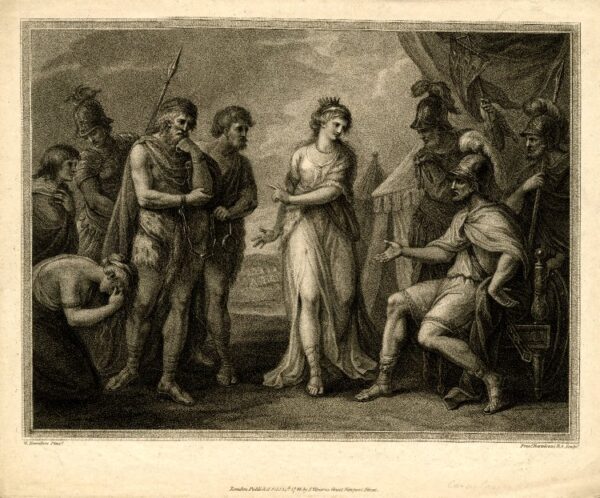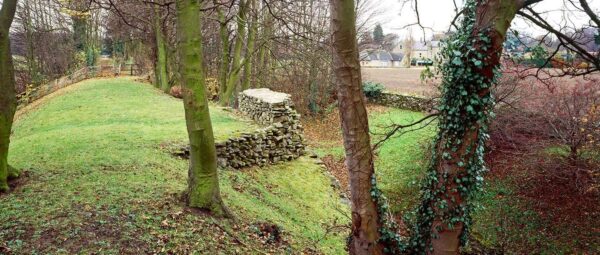
When Petillius Cerialis arrived in Britain as the new governor it was not his first trip to the island. Ten years earlier, as commander of the legio IX Hispania, he had been badly mauled by Boudica and, according to the Roman author Tacitus, while trying to assist the citizens of Colchester, he ‘was stopped by the victorious Britons and routed. The entire infantry force was massacred, while Petillius Cerialis escaped to the camp with his cavalry and sheltered behind its defences’.
In his new posting he also knew that one of his first jobs was to deal with the Brigantes tribe in the North: a task that had also fallen to his elder brother, Caesius Nascica, a few years previously. In relation to this earlier engagement Tacitus makes the ‘helpful’ comment that ‘a battle fought by a regular brigade under Caesius Nasica had a satisfactory ending‘. Cerialis would certainly have appreciated that he had quite a hill to climb when he stepped ashore in AD 71!
At the time, the territory of the Brigantes was extensive, covering North Yorkshire, Lancashire and parts of the Lake district. It was most likely an amalgam of several tribes that had been brought together into a slightly shaky confederation. In the early years after the Roman invasion of Britain it was ruled by the powerful Queen Cartimandua.

The relationship between the Brigantes and the Romans had wavered over the years. At the start all appeared quite rosy with the Brigantes adopting a pro-Roman stance, importing luxury Roman goods from the continent and even handing over the rebel Catuvellauni tribal leader Caratacus to the occupying forces (Figure 1).
But there were also some internal tensions between the different Brigantian factions that surfaced from time-to-time. The most serious arose from the estrangement of Cartimandua and her husband Venutius. Tacitus takes up the story: “Venutius, who, quite apart from a violent character and a hatred of all things Roman, was goaded to fury by a personal feud with Queen Cartimandua… She tired of Venutius, who was her consort, and gave her hand and the kingdom to his armour-bearer, one Vellocatus. This scandal immediately shook the royal house to its foundations. The discarded husband could rely on the support of the Brigantian people, the lover upon the infatuation of the queen and her ruthless cruelty. So Venutius summoned help from outside, and a simultaneous revolt on the part of the Brigantes themselves reduced Cartimandua to a position of extreme danger, in which she appealed for Roman assistance. In the event, our cohorts and cavalry regiments did succeed, at the cost of desperate fighting, in rescuing the queen from a tight corner. Venutius inherited the throne, and we the fighting“.

Cerialis arrived in Britain with a newly raised legion (II Adiutrix) and headed up to Lincoln to join the IX Hispania. Leaving the II Adiutrix to settle in at Lincoln he then advanced to York and Malton with his former command, crossing the Humber at Brough. The arrival of Cerialis in Yorkshire marked the start of the Roman association with Malton. The location for the fort on slightly raised ground overlooking the River Derwent would certainly have helped to control an important route along the Vale of Pickering and the eastern approaches to York (Figure 2).

Cerialis’ subsequent three years of campaigning into Brigantia from the East with the legio IX Hispania were supported by the legio XX Valeria Victrix based at Chester and commanded by Julius Agricola, marching up the Western side of the Pennines. The two forces might have eventually met in the Carlisle area and even advanced a short way into Southern Scotland too. But it seems very unlikely that the campaign ever climaxed in a single decisive confrontation. Tacitus describes: “a series of battles – some of them by no means bloodless”.

Venutius and Cartimandua disappear from history and the former stronghold of the Brigantes at Stanwick (Figure 3) was replaced by a new civitas at Isurium Brigantum (Aldborough) (Figure 4). Cerialis left Britain in AD 74 with Agricola becoming governor three years later. Agricola’s daughter, Julia, married the author Tacitus.
Figure 1: Queen Cartimandua handing over Caratacus to the Romans, as illustrated on at 18th Century engraving by F. Bartolozzi © Wikimedia Commons
Find out more about Queen Cartimandua on Wikipedia
Find out more about Caratacus on Wikipedia
Figure 2: The first fort at Malton would have looked very similar to the reconstruction that can be seen at Lunt, nr Coventry © Nick Summerton.
Find out more about Lunt Roman Fort
Figure 3: The ramparts of the stronghold of the Brigantes at Stanwick, North Yorks © Nick Summerton.
Find out more about Stanwick from English Heritage
Figure 4: The remains of the Roman walls at Aldborough (Isurium Brigantum) © Nick Summerton.
Find out more about Roman Alborough from English Heritage
